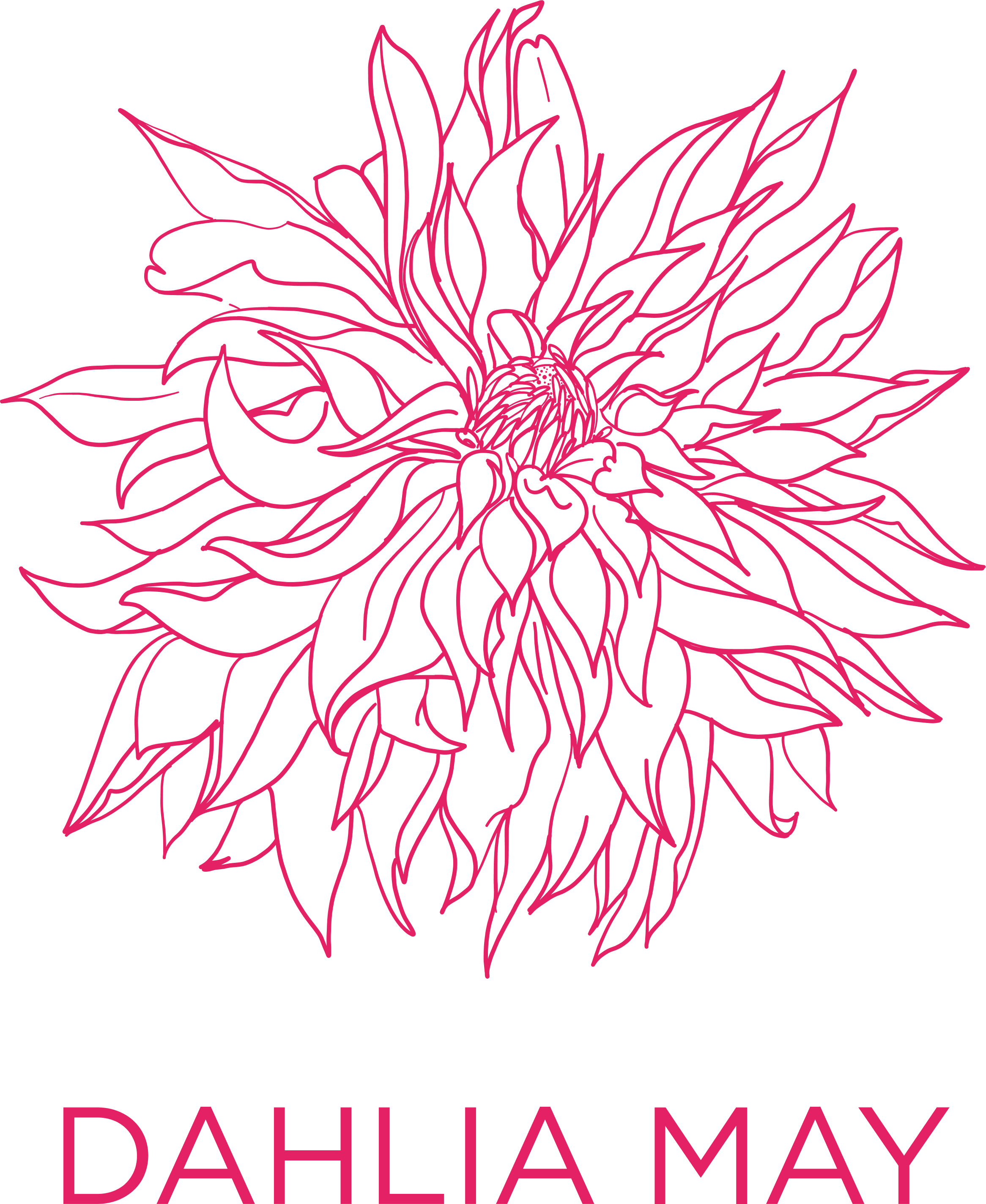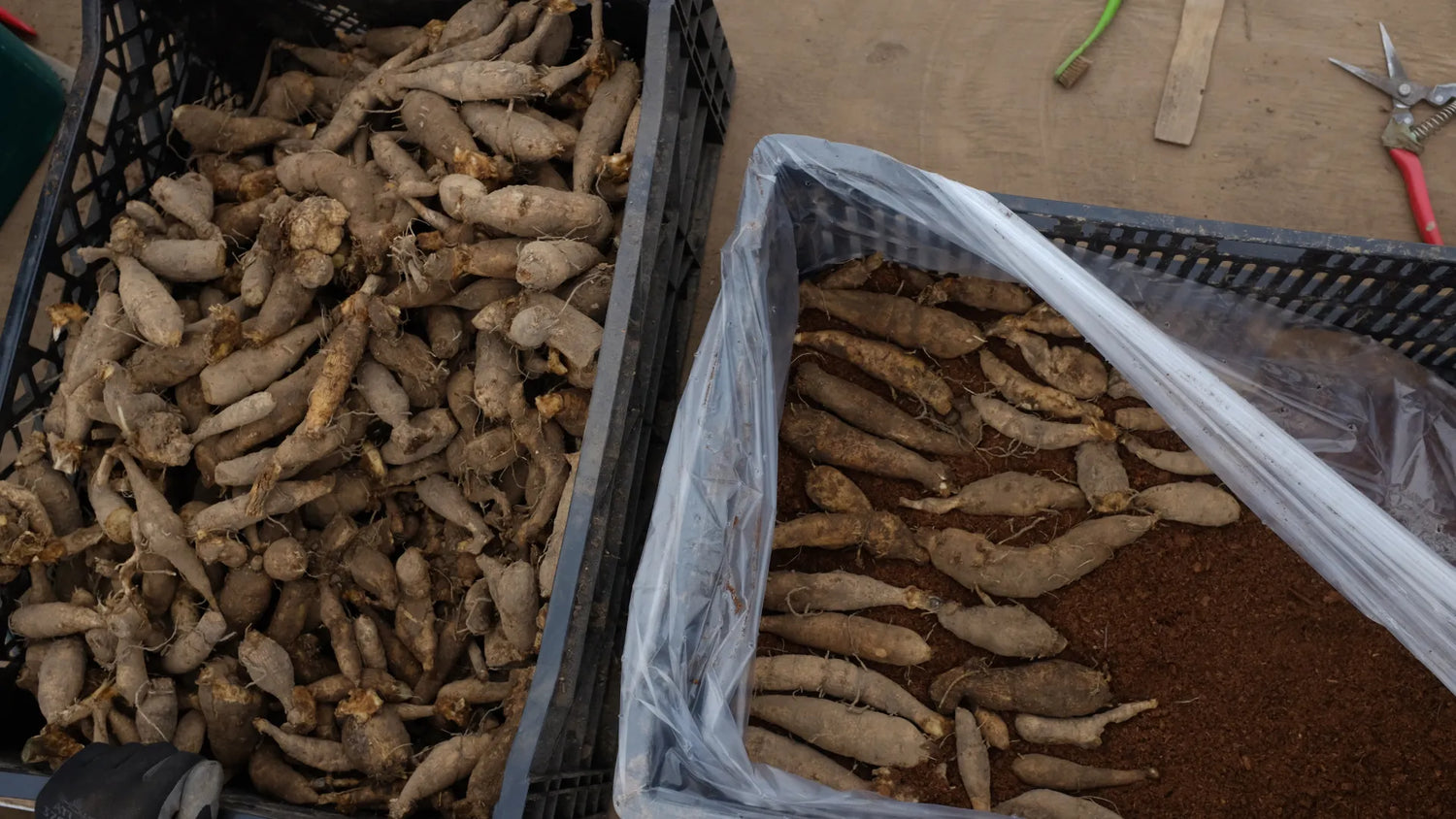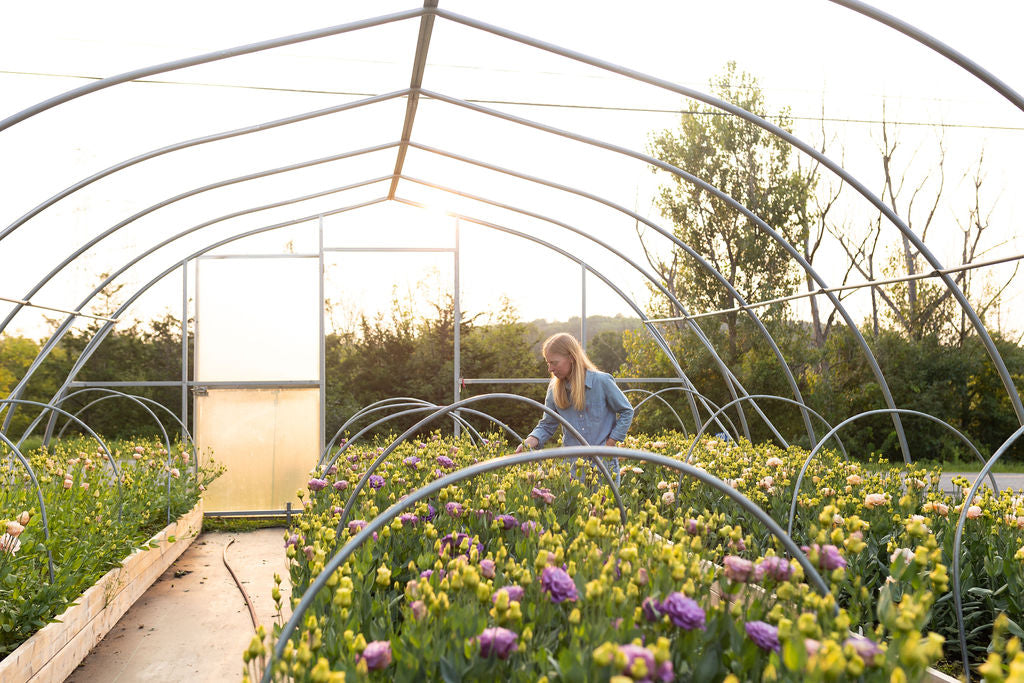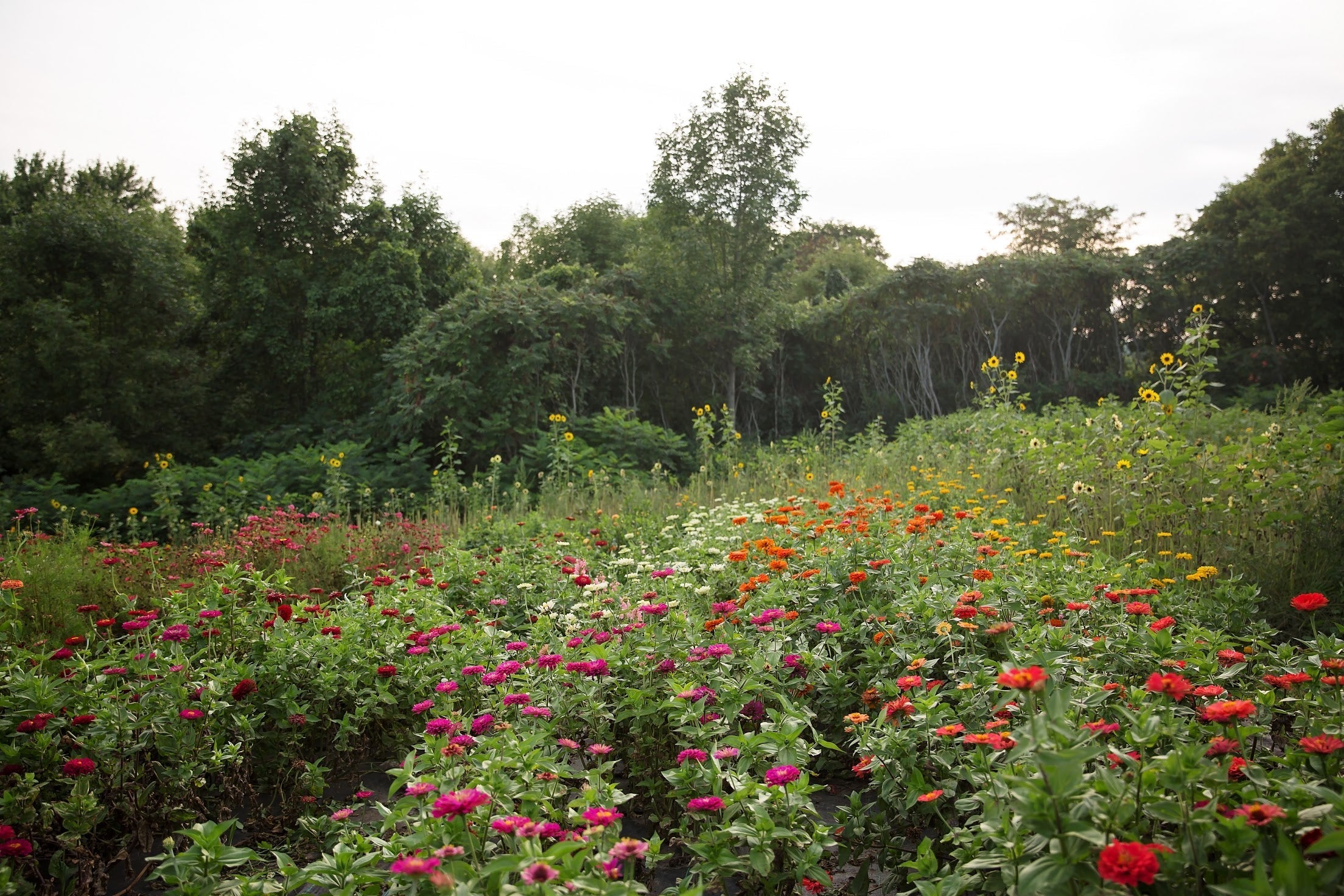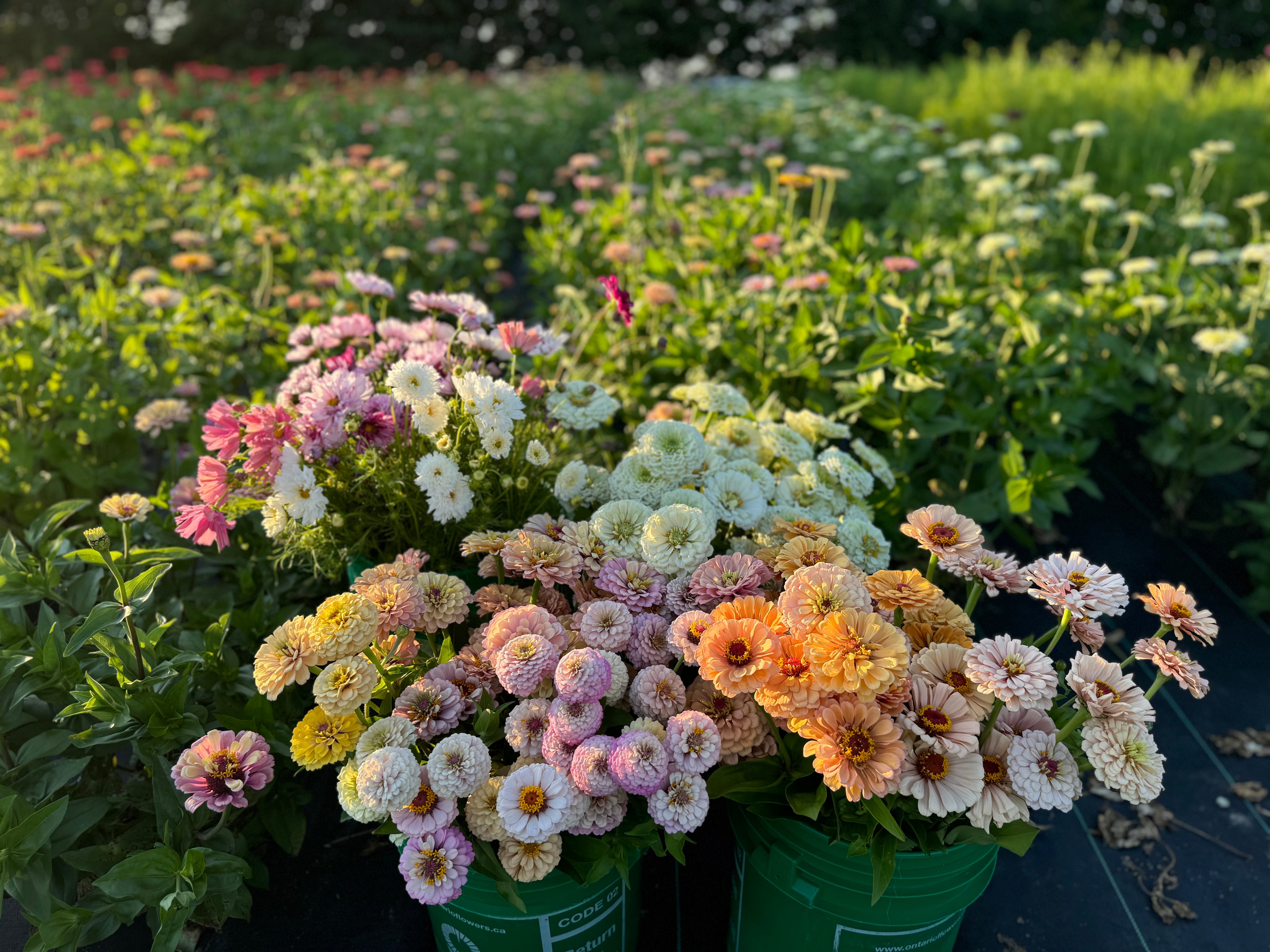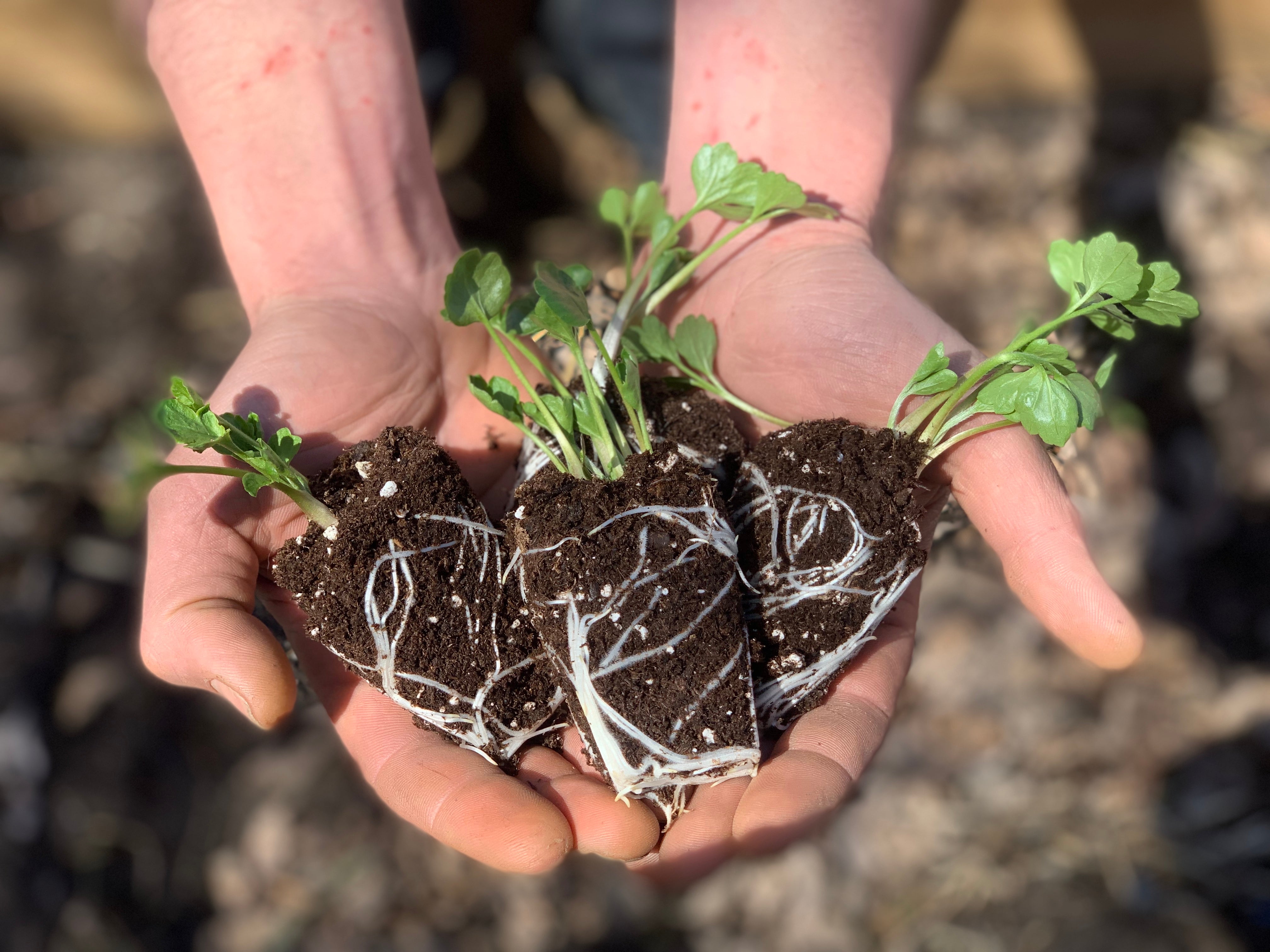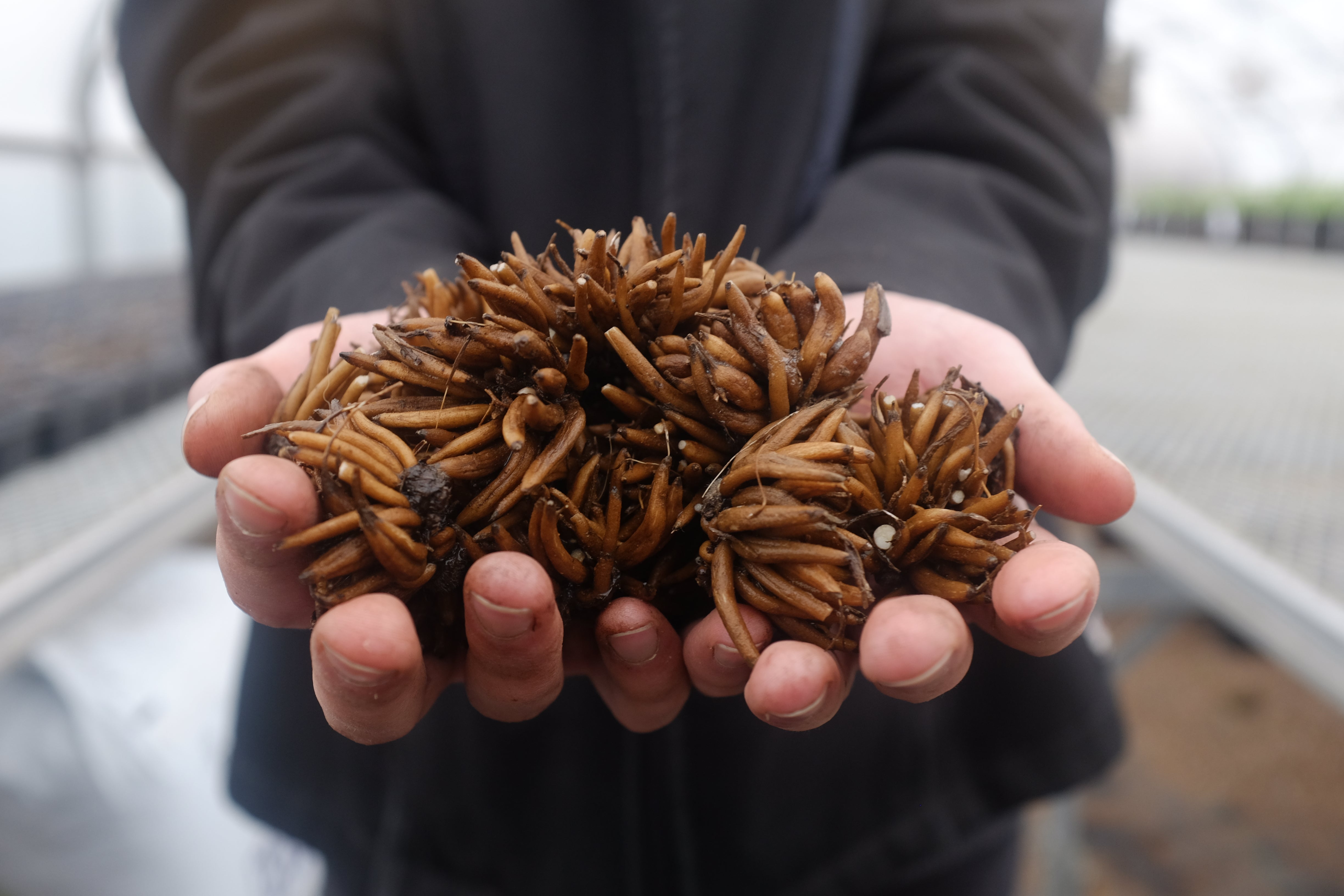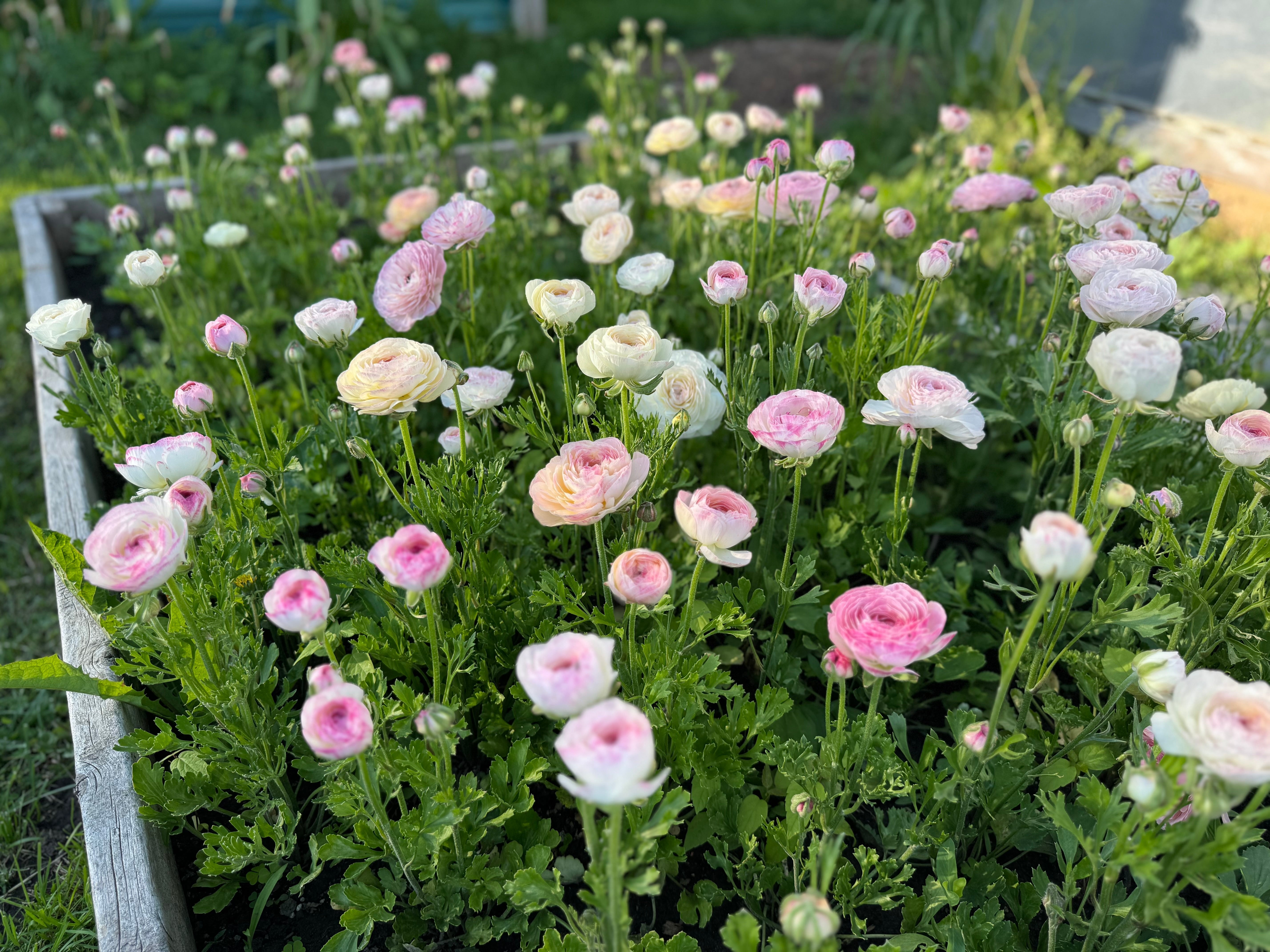After an abundant summer of blooms, once the weather turns cold that the first frost hits, one of the questions we receive most frequently is “how do I store my dahlia tubers over the winter?”. It can feel a little intimidating to know exactly what to do with these clumps of tubers that you’ve worked so hard to grow, and the online space is filled with hundreds of different methods of storage. Every gardener's own situation is unique, but here we’ll share what’s worked for us in our years of farming, as well as some foundational information that will apply to all of you in your own home gardens.
After you’ve dug your dahlia tubers up (more information on how to do that HERE), we recommend that you do NOT wash or hose off your clumps of tubers. Some growers and gardeners do wash their tubers before storing them away for the winter, and we know that different things work for different people. We can only speak to what works best for us, here at our farm, after 8 years of growing, digging and storing dahlias and experimenting with many different methods. In our experience, storing Dahlia Tubers is very similar to storing potatoes. Both of these starchy tubers do best when stored with the dirt on them, in a cool dark and dry place over the winter.

We have two methods of storage that work well for us, and we’ll share them here.
Our first method of storage is to simply dig our tubers up, leave the dirt on them (we do NOT wash our tubers), and pile the clumps of tubers in bulb crates. Bulb crates (pictured below) are plastic crates with perforations to allow good air flow. Bulb crates are typically available through local garden centres, Facebook groups, or online. If you live locally, we offer bulb crates for purchase at our farmstand, you can find the link to order them here.
If bulb crates are not available, milk crates (or any other crates with perforations in them) work quite well for this purpose. We find that utilizing crates with perforations in them is key to air flow, and good air flow keeps tubers from rotting. If you’re needing to use sealed plastic containers (such as Rubbermaid containers) we recommend poking holes in them to allow for air flow for your tubers.
Temperature and humidity levels are the two keys to successful dahlia tuber storage. Your dahlias will need to be kept in a cool —but not freezing— environment, and they’ll need relatively high humidity.
We find that 38-50 degrees F (4-10 degrees C) is best, and you’ll want to aim for 75%-85% relative humidity.
If your storage temperatures are too low, you’ll run the risk of freezing your dahlia tubers. If your storage temperatures are above 50 degrees your dahlia will be confused by the temperature and start to sprout and grow prematurely, over the winter.
If your humidity is too low, your tubers will begin to dry out and dehydrate. You may have had this happen in the past, with tubers shriveling up. Once your tubers have shriveled up and dried out, they will not be viable any longer. This is one of the reasons that maintaining higher humidity is key, as the moisture will keep the tubers plump and healthy over the winter.
If your humidity is too high, you run the risk of your tubers developing mold or rotting. Mold can spread easily through tubers, and without careful watch it can infect an entire batch of tubers that you’ve been working so hard to save. We’ve made this mistake in the past, and we know just how disappointing it can be to lose your tubers. If you do see mold beginning on your tubers, try utilizing a dehumidifier to lower the humidity, or move your tubers to a drier environment. Brush any mold off of your tubers with a toothbrush. If the mold has permeated the surface of the tuber, cut the infected piece of the tuber off and throw it away. You can cut up to 70% of the large fleshy part of a tuber away without affecting the future growth of the plant.
We’ve found that unheated basements, unheated garages, and root cellars are often the best places to store tubers over the winter. Remember, 38-50 degrees F (4-10 degrees C) is the best temperature to keep your tubers at, and your tubers cannot freeze over the winter. What if you don’t have a spot cool enough to store your tubers? Reach out to friends and fellow gardeners to see if they can help.
Using this method, we do not split our tubers until the spring. We store our clumps whole, with the dirt on them, in these bulb crates until springtime, at which point we split our tubers.
The second storage method we use is to store our tubers in peat moss. We’ll outline this process below. Here on our farm, we split out tubers in the late winter (more on how to split your tubers in another post), at which point we pack them back up for the remainder of their winter storage in peat moss.
We split our tubers in mid winter only because that’s when we have the time to do it. You can split your tubers in the fall, directly after digging them, in mid winter when you have time, or in the spring just before you plant. Choose whatever timing works best for you and your own gardening or farming situation.
We store our tubers in peat moss after splitting them, but if you have smaller quantities of tubers you can go ahead and store your tubers this way as soon as they are dug, either before or after splitting.
We line our bulb crates with clear plastic recycling bags.

We add peat moss to the bottom of the bags, put the tubers in on the bed of peat moss, then cover the tubers with more peat moss. We then fold the top of the bags over, poking a few holes in them to maintain air flow.
Peat moss helps regulate the amount of moisture in the tubers, and we find that packing our tubers in peat moss keeps them plump and healthy over the winter. Some gardeners use vermiculite instead of peat moss, and this works quite well too. Do NOT use wood shavings or shaved wood pet bedding. We’ve learned the hard way that wood shavings will draw moisture out of the tubers, causing them to shrivel.
Ultimately, part of gardening is learning by experience what works for YOU. Try a few different methods to find out what works best in your own particular situation, keeping in mind these two very important base lines: Winter storage at 38-50 degrees F (4-10 degrees C) is best, and you’ll want to aim for 75%-85% relative humidity.
Your efforts will be rewarded in the spring, when you can plant an abundance of your very own saved dahlia tubers!
